Detroit Tigers: The Five Worst Trades in Franchise History

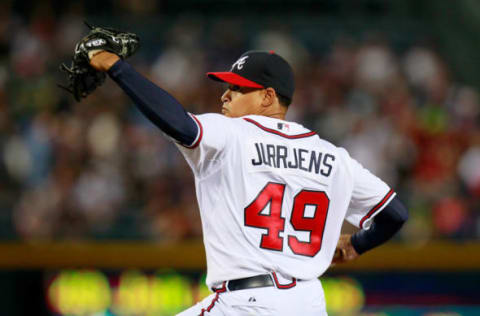
The Detroit Tigers have had their fare share of outstanding trades, including landing superstar Miguel Cabrera. But with all good trades come a few clunkers.
Detroit Tigers fans were able to relish in the team’s successful trades a few weeks ago, when we listed the five greatest trades in team history. Chief among them was the team’s acquisition of superstar Miguel Cabrera, whom the team acquired for a handful of prospects who never fulfilled their potential.
Trades like that have often worked out well for the Tigers, as they have netted Anibal Sanchez, Omar Infante, Doug Fister and others by giving up prospects who didn’t pan out.
Unfortunately, those are the trades that often come back to bite a team in the ass. And while the Tigers have had some success in that regard, they’ve had some failures as well.
Here is a compilation of the five worst trades in Tigers history. We will start with an honorable mention, a star for prospects deal that didn’t work out:
Tigers send Jair Jurrjens and Gorkys Hernandez to the Braves for Edgar Renteria
The Tigers were in desperate need of a shortstop after the 2007 season. Carlos Guillen had a great season, but the Tigers were hoping to move him and his questionable glove over to third base. They struck early in the 2007 offseason, sending prized pitching prospect Jair Jurrjens and outfielder Gorkys Hernandez to the Braves in exchange for well-respected veteran Edgar Renteria.
Renteria was coming off a 2007 season where he’d slashed .332/.390/.470 with 12 home runs and 11 stolen bases. He was an All-Star in 2006 and was only 31 years of age. Jurrjens and Hernandez seemed like a small price to pay for a five time All-Star shortstop.
Unfortunately, Renteria never found his footing in the Motor City. He hit .270/.317/.382 with 10 home runs and six steals, good for an 84 OPS+ and a 1.1 bWAR. He signed with the Giants after the season and won a ring with them in 2010.
Meanwhile, Jurrjens exploded onto the scene in 2008, going 13-10 with a 3.68 ERA and a 113 ERA+. That was good for third place in rookie of the year voting. He led the league in games started the following year and made an All-Star team in 2011. Injuries caught up with him in 2012, and he was out of the game by 2014 at age 28.
Hernandez didn’t reach the big leagues until 2012. He bounced around until he caught on with the Giants three years ago. While he hasn’t been a great big league performer, the Tigers still lost this trade, big time. The team was desperate for a fifth starter from 2009-2010, and Jurrjens would have been a great piece to have.
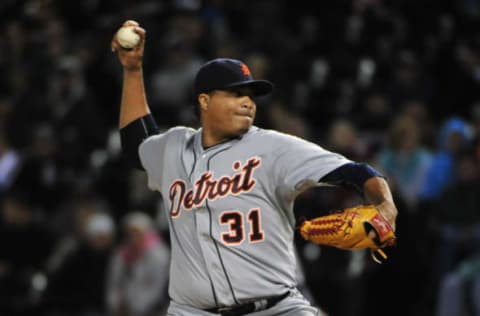
The Detroit Tigers trade Eugenio Suarez and Jonathon Crawford to the Reds for Alfredo Simon
Searching for a fifth starter ahead of the 2015 season, the Tigers decided to dip into their depleted farm system and sent infielder Eugenio Suarez and former first round pick Jonathon Crawford to the Reds in exchange for big right-hander Alfredo Simon.
Simon was coming off his first All-Star campaign, having gone 15-10 with a 3.44 ERA and a 1.21 WHIP in 2014 with the Reds. He spent the first six seasons of his big league career as a reliever, but immediately made an impact as a starter in Cincinnati. The Tigers hoped he could come in and slot right into the rotation. While he managed to make 31 starts and go 13-12, his lone season in the Motor City was a disaster. Simon posted a 5.05 ERA with a 1.44 WHIP and a 79 ERA+.
He was a free agent after the season and went back to the Reds, no doubt hoping to recapture some of whatever made him an All-Star in 2014. It didn’t pan out, as he went 2-7 with a 9.36 ERA before being done with pro baseball.
The full repercussions of this trade are yet to be known, but it’s safe to say it was a disaster. While many expected that trading a former first round pick would come back to haunt them, Crawford has not even reached the big leagues and appears to be done with baseball, having not pitched in 2018.
Suarez, however, has developed into a bona fide star in Cincinnati. After hitting 13 home runs with a .280 average in a part-time role in 2015, Suarez truly broke out in 2016. The third baseman hit 21 home runs and stole 11 bases. He followed that up with 26 round-trippers in 2017, and is currently leading the league in slugging in 2018 with a .583 mark (as of this writing).
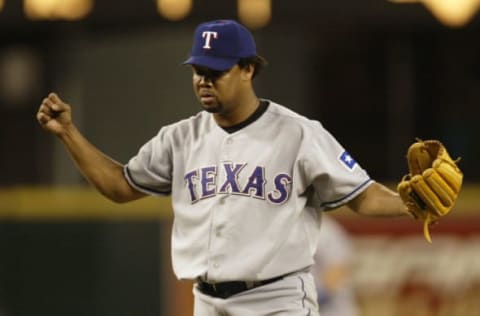
The Detroit Tigers send Francisco Cordero, Frank Catalanotto, Alan Webb, Gabe Kapler, Bill Haselman, Justin Thompson to the Rangers for Juan Gonzalez, Danny Patterson, Gregg Zaun
The Detroit Tigers no doubt wanted to open Comerica Park in 2000 with a bang. Adding a superstar in their prime, like Rangers slugger Juan Gonzalez, seemed like the perfect solution. They gave up a pretty penny to acquire ‘Juan Gone’, giving up six young players in exchange for Gonzalez and a pair of veterans in Danny Patterson and Gregg Zaun.
This deal, as you likely already know, was a disaster. Gonzalez never settled in to Detroit. He was unsettled by the spacious confines of the new park, only hitting 22 home runs with 67 RBI. He hit .289 and posted a 116 OPS+ in his lone season in Detroit, signing with the Indians during the offseason. There’s no doubt this was a trade that decimated the franchise. Having players like Catalanotto, Cordero and Kapler would very likely have prevented the 2003 Tigers from being the worst AL team in baseball history.
Gonzalez’s 1.9 bWAR with the Tigers wasn’t even the best the Tigers acquired, as journeyman reliever Danny Patterson posted a 2.4 bWAR in five years out of Detroit’s bullpen. Gregg Zaun was sent to Kansas City before ever playing a game in the Motor City.
All-in-all, it’s fair to call this one of the worst trades in Tigers history. Cordero went on to save 329 games and make three All-Star teams. Catalanotto played ten more seasons, hitting .293 with a 109 OPS+. Kapler also played ten more years, hitting .272 with 64 home runs and 64 steals. All three of them became very useful, above average big leaguers. Meanwhile, the Tigers got one down year from an aging slugger and five average seasons from a journeyman reliever.
The Tigers traded for a superstar eight years later in Miguel Cabrera and managed to redeem themselves. However, the Gonzales ordeal was a cautionary tale on trading multiple prospects for one slugger.
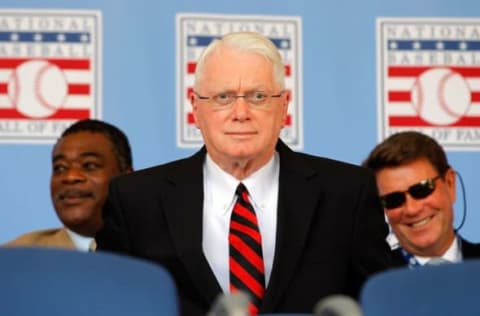
Detroit Tigers trade Jim Bunning/Gus Triandos to Philadelphia for Don Demeter/Jack Hamilton
This trade hurts in particular because while hindsight is 20/20, the Tigers already knew what they had in Jim Bunning when they made the decision to trade him. Trading a prospect for an established player, and then having that prospect blossom into a superstar, is unlucky. Trading an established superstar and getting nothing in return, well that often leads to someone losing their job.
But that’s exactly what the Tigers did on December 5, 1963 when they traded future Hall of Famer Jim Bunning, along with infielder Gus Triandos, to the Phillies in exchange for infielder Don Demeter and right-hander Jack Hamilton.
Bunning had been with the Tigers for nine years, posting a 118-87 record with a 3.45 ERA. He made five All-Star games, including three in a row, and was one of the most durable arms in the league.
However, the Tigers must have felt he was on the decline. In need of hitting, the team acquired Don Demeter, who was coming off three straight seasons of 20 or more home runs. Demeter kept that streak going, hitting 22 in 1964 for the Tigers. He had a solid year in 1965 before getting dealt to Boston in 1966.
Jack Hamilton was a bust. He only threw 19 1/3 innings for the Tigers from 1964-1965, posting an ugly 9.78 ERA.
Meanwhile, Bunning did what Hall of Famers do: dominated. He pitched eight more seasons, going 106-97 with a 3.10 ERA and a stellar 1.15 WHIP. He made two more All-Star teams and finished second in Cy Young voting in 1967. Just for good measure, Bunning even tossed a second no-hitter.
Ouch.
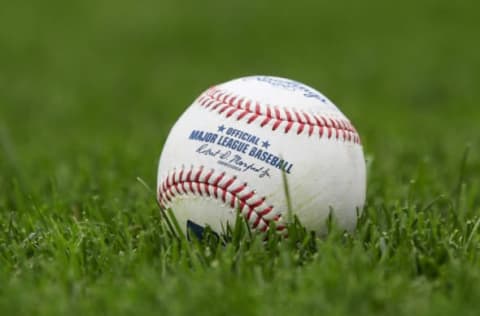
The Detroit Tigers trade Billy Pierce and $10,000 to the White Sox for Aaron Robinson
Concerned with the left-handed Pierce’s early control issues, the Tigers shipped him, along with $10k, to the White Sox for catcher Aaron Robinson. Allegedly, Tigers GM Billy Evans immediately regretted trading Pierce, calling the White Sox the next day and trying to call off the trade.
Unofrutnately for Detroit, that strategy didn’t work. Evans was wise to regret the trade, as Pierce went on to become one of the greatest pitchers of the 1950’s.
Pierce pitched for the White Sox from 1949-1961. He went 186-152 with a 3.19 ERA and a 1.26 WHIP. He tossed 183 complete games and 35 shutouts.
Pierce finished his career with three seasons in San Francisco, retiring with 211 wins and a 3.27 ERA. Although he didn’t make the Hall of Fame he was a seven time All-Star and is 87th all time in pitcher WAR, with a mark of 53.2.
Robinson hit .244 with 22 home runs in 253 games for the Tigers, good for a 3.4 bWAR. So the Tigers gave up $10,000 dollars and well over 10x as much value on the diamond. No wonder Evans regretted it immediately. Too bad it wasn’t sooner.

Detroit Tigers trade John Smoltz to the Braves for Doyle Alexander
This is the best proof that hindsight is 20/20. On paper, the Tigers trade of minor leaguer John Smoltz to the Braves for Doyle Alexander made perfect sense. After all, Smoltz was a 22nd round pick who went 4-10 with a 5.68 ERA in Double-A in 1987. Trading him to acquire an arm like Alexander, who had thrown over 2,700 big league innings with a 3.71 ERA and was a Cy Young finisher in 1986, seemed like a no-brainer.
To give a modern example, this would be like the Tigers trading 2016 22nd rounder Burris Warner for C.C. Sabathia at the trade deadline. If the team was competing, this trade would make perfect sense. No one is expecting Warner to become a Hall of Famer.
Except John Smoltz did exactly that.
The trade started off with quite the bang, as Alexander went 9-0 with a 1.53 ERA in 11 second half starts for the Tigers. Without him, the team may not have made the pennant that year. Alexander was bad in the playoffs however, and although he made 67 more starts for the Tigers he posted a 4.38 ERA and a 20-29 record.
You don’t need me to tell you what happened to John Smoltz. From 1988-1999, Smoltz was one of the best starting pitchers in baseball. He went 157-113 with a 3.35 ERA (during the steroid era) with a 121 ERA+, 47 complete games, a 1.18 WHIP and 2,098 strikeouts.
Then, an injury cost him all of 2000. No matter, as Smoltz seamlessly transitioned into a lights out closer. From 2001-2004, Smoltz earned 154 saves with a 2.65 ERA and a 162 ERA+. Then, just for fun, he transitioned back into the rotation, making 120 more starts and two All-Star games. He retired in 2009 at age 42 with 213 wins, 154 saves and a 3.33 career ERA. He was a first ballot Hall of Famer and is one of the best pitchers of his era.
An extremely unfortunate outcome for the Tigers, who must have felt like they gave up very little to acquire an extremely helpful rotation piece down the stretch. As I said, hindsight is always 20/20.
Next: Five Best Trades in Franchise History
Trading is always a risky game. The Tigers have had plenty of successes, but like any team they’ve had their failures as well. Let us know if there are other trades you think belong on this list!